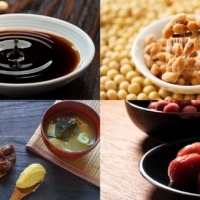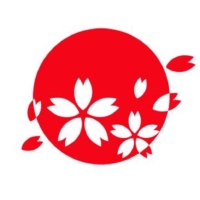“There’s just so much cooking going on in the Japanese home that could be part of people’s lives, and what they’re looking for — the health benefits, the clean taste,” said famed New York French fusion chef David Bouley during a recent interview with The Japan Times. One of the first non-Japanese to be appointed a Japanese cuisine goodwill ambassador by the Japanese government in 2016, the Michelin-starred chef enthusiastically detailed the potential of Japanese food in the U.S. market.
The popularity of Japanese cuisine is surging worldwide and so are Japan’s food-related exports. The government is intent on making the country an export power and has set a goal to boost the value of its exports to ¥2 trillion by 2025 and ¥5 trillion by 2030 — a more than fivefold increase from the 2019 figure of ¥912.1 billion.
Winning the hearts, minds and stomachs of consumers abroad is naturally vital to this strategy. Achieving that goal, however, requires overcoming the hesitance to explore the culinary unknown existing among many outside Japan, informing people about the country’s vast and varied food culture, as well as the cuisine’s sophisticated tastes and health benefits. It also means showing them how simple it can be to incorporate Japanese products and ingredients into what they make in their homes.
Thanks to various government efforts to assist in accomplishing these goals, agricultural exports are growing. In 2021, the value of food exports from Japan reached ¥1,238.5 billion, up 25% from the previous year.

Opening channels
How can consumers overseas get to know and love the edible and potable wonders Japan has to offer? Through an ever-expanding range of cooking videos, websites, expos, cooking contests and other events that showcase the products available and what people can do with them.
The Japan Food Product Overseas Promotion Center, dubbed JFOODO, is the part of the Japan External Trade Organization (JETRO) that oversees the promotion of priority export items in various target countries and regions. One focus is to show the compatibility of sake and fish and shellfish. That includes a “Seafood Loves Sake” event. In September and November, for example, the third Hong Kong version of “Seafood Loves Sake” brought together 100 renowned local eateries (both Japanese and Chinese) serving over 300 curated menus featuring singular sake and seafood pairings. Visitors discovered that sake is a worthy crossover beverage that also pairs well with Chinese dishes.
Learning what pros can do with washoku in competition with each other is another path to exploring to the wealth of dishes and ingredients available. After vetting applicants from around the globe demonstrating their culinary skills and understanding of Japanese cuisine, the ninth Washoku World Challenge series ended up with finalists from the U.S., Brazil, Hong Kong, South Korea, the U.K. and Taiwan.
People who want to know where to find the best Japanese food and ingredients in their area should look for overseas restaurants and retail stores that JETRO and others have certified as Japanese Food and Ingredient Supporter Stores. These places are part of an extensive and growing network that as of December listed 8,184 certified supporter stores in 68 countries and regions. Diners and shoppers know they’re getting the right stuff when they see the Japan Food Supporter logo.
There are clear signs that the nationwide initiative is winning over a significant number of foreign consumers. This is reflected by the popularity of beverages such as sake and marine products. Sales of the former rose ¥16 billion year on year in 2021, mainly thanks to strong demand from China and the U.S. Sales of scallops meanwhile surged ¥32.5 billion on the same basis, due primarily to the recovery of the restaurant industries in the U.S. and China.
Japan’s famed green tea is gaining popularity abroad as well, with total exports at over ¥20 billion in 2021. On the JFOODO promotion site, Hollywood actress Nikki Reed (“The Twilight Saga”) and tidying-up consultant Marie Kondo, who is well known in the U.S., promote the goodness of green tea, which is being marketed as “the mindfulness beverage.” Consumers can buy the tea on JFOODO’s Amazon site. Between 2020 and 2021, sales of green tea on the site nearly tripled.

People intent on learning what Japanese cuisine is all about should know about the Taste of Japan website run by the Agriculture, Forestry and Fisheries Ministry, which showcases Japanese food, food trends, food culture and products, and includes recipes that incorporate Japanese ingredients and information on Japanese cooks active throughout the world. They can use a search engine on the site to find Japanese restaurants and types of cuisine near them and identify the ingredients they need to prepare dishes at home.
The rise of COVID-19 has obviously reduced expos, seminars and other large gatherings that introduce all this goodness abroad to consumers directly. Online sources like Taste of Japan and social media are valuable resources for consumers who cannot travel to find alternative ways to enjoy washoku at home or locally.
A healthy, tasty perspective
Bouley’s perspective on Japanese cuisine and what goes into it is especially worthwhile and instructive. Japanese food has fascinated him since the ’80s, powered largely by a long association with the Tsuji Culinary Institute in Osaka that included opening a restaurant in New York City in partnership with the Tsuji family. The TripAdvisor Traveler’s Choice Awards named the chef’s eponymous eatery, Bouley, the best restaurant in the U.S. in 2015.
Being a passionate proponent of Japanese cooking who’s aware of how it can suit global tastes and change health for the better, Bouley is a perfect choice for the title of Japanese cuisine goodwill ambassador. His long-running collaborative lecture and dinner series “Chef & The Doctor” — which Bouley hosts alongside world-renowned doctors and nutritionists — presents alternative, preventive and functional medicine as the core of each presentation. Japanese ingredients are a frequent focus. Bouley’s “The Magic of a Dish” series on NHK World-Japan, the international arm of Japan’s public broadcaster, takes viewers on a dedicated foodie tour that begins in Okinawa and goes all the way up to Hokkaido, focusing on longevity and creating the ultimate healthy cuisine.
When UNESCO registered washoku as an Intangible Cultural Heritage of Humanity in 2013, it triggered vast interest in Japanese food, but that interest remains largely untapped in most of the world. Why are Japanese cuisine and the ingredients that go into its dishes still mysteries to the average cook overseas, and what can be done to fix that? Bouley was happy to share some answers and introduce some success stories. He notes several areas for improvement, including building familiarity and pumping up the health benefits.
Demystifying the goods
Unfamiliarity with Japanese ingredients blocks a lot of culinary creativity because the average person doesn’t know how to incorporate them. “If they have soy sauce, it’s probably because they want to have it with sashimi or sushi,” Bouley explained. “Many people don’t know what to do with soy sauce beyond those few elements.”
Instead of attempting to introduce something totally different and new, he suggests starting with what they’re already comfortable with and what they’re already eating, then showing them elements they don’t know that would complement what they’re already eating.
Bouley illustrated how three Japanese products that supermarkets usually carry — soy sauce, miso and umeboshi (pickled plums) — can transform many everyday dishes.
“For instance, try using soy or miso instead of salt, because they’ve got plenty of umami as a bonus,” he suggested, “or brush soy sauce on steak or add it to dressing. Miso is particularly versatile. You can blend it with pepper and honey and rub it on chicken or salmon, add a spoonful of white miso to creamed cod, combine red wine with red miso in beef stew, and use it as a spread for a cheeseboard. It’s great in all kinds of soups, too, like Kyoto sweet miso in sweet corn soup.”
He adds that umeboshi is a great savory substitute for lemon or vinegar, such as in cream sauces. Umeboshi can also add punch to savory and salty cocktails, and umeboshi-based beverages pair well with honey.
Commercial crossover products have appeared, such as cocoa matcha and the ramen burger, that may smooth explorations into Japanese cooking because they are proof of the possibilities.

Supercharging the body
“We’ve been eating too much shelf-stable food for too long,” Bouley said. “We need more nutritional density, omega-3 and good bacteria in our microbiome. Japanese food is off the charts on that score, and what we need more of.”
He is especially keen on fermentation and the fermented goods Japan produces, including miso and natto (fermented soybeans). He also mentions sunki-zuke from Nagano Prefecture — pickled purple turnip leaves produced for centuries using lactic acid fermentation, with no salt required. “When I brought a biochemist from Nagano to Cornell University, the professors there were shocked about the benefits of these pickled greens, particularly the amount of vitamin B12, which we think of as only coming from animals. It’s anti-aging, and one reason Nagano is becoming a superior ‘Blue Zone’ (an area where people have long-life expectancies).”
The National Cancer Center Japan uses the eight-item Japanese Diet Index (JDI8) to evaluate how the consumption of rice, miso soup, seaweed, pickles, green and yellow vegetables, seafood, green tea and beef or pork affect mortality. The center reports that groups with higher JDI8 scores have a 14% lower mortality rate overall and are 11% lower for both cardiovascular and heart diseases. Eating fermented soy foods enhances longevity, and there is evidence that consuming natto frequently staves off cardiovascular disease.
Bouley also cited the body-friendly benefits of umeboshi. “Umeboshi are so good for health. For example, a lot of athletes who get cramps from lactic acid buildup eat them because they neutralize that.”
Japanese tea in all its forms is a phenomenon unto itself. Bouley mentioned Kettl Tea, run by a former musician named Zach Mangan, as a shining example. “Zach got educated by certain tea farmers in Japan and went to different prefectures,” he said. “He’s now on his second location in Brooklyn and doing extremely well.” The customers in Zach’s shop, Bouley added, look like they’re drinking fine wine, the way they’re looking at their cups and smelling the tea. And passionate fans tend to spread the word.
According to Bouley, noted integrative medicine expert and author Dr. Andrew Weil shares his passion by selling matcha online and explaining its health benefits. Those include catechin polyphenols — compounds with high antioxidant activity that protect against many kinds of cancer, stave off cardiovascular disease and slow the aging process.
New processes also come into play for perishables that travel from Japan. Bouley mentioned a prominent East Coast supermarket chain that developed a patented process that allows it to bring tuna from deep freeze to 20 degrees, dice the more muscular parts, and then put them back into the freezer. “Since it never goes above freezing, there’s no oxidation,” Bouley said.
Farm-to-table is one of the most convincing ways to open someone’s mind to a cuisine. Bouley and NHK recently launched an NHK World documentary in New York on bento made from a garden on Wall Street growing Japanese vegetables. “We made a series of dishes for high school students that go there in the summer to learn about differences in food and how it grows and so on. The palate is there, the interest is there.”
It’s clear from what Bouley says that Japan is full of such products and delicious dishes made from them. The range of culinary possibilities Japan offers is astounding and its food culture is immersive once those possibilities are perceived. Cooks everywhere just need to explore the recipes and other culinary resources out there to turn these flavorful, healthy and nutrient-dense ingredients into memorable meals.
This page is sponsored by the government of Japan.










